Deck 1: Section 1: Preparation for Calculus
سؤال
سؤال
سؤال
سؤال
سؤال
سؤال
سؤال
سؤال
سؤال
سؤال
سؤال
سؤال
سؤال
سؤال
سؤال
سؤال

فتح الحزمة
قم بالتسجيل لفتح البطاقات في هذه المجموعة!
Unlock Deck
Unlock Deck
1/16
العب
ملء الشاشة (f)
Deck 1: Section 1: Preparation for Calculus
1
Which of the following is the correct graph of  ?
?
A)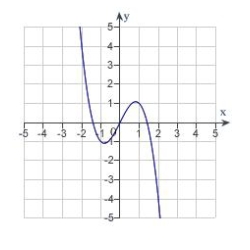
B)
C)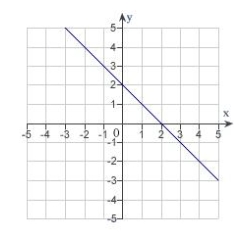
D)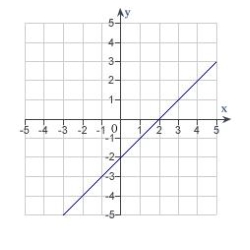
E)
 ?
?A)

B)

C)

D)

E)


2
The resistance y in ohms of 1000 feet of solid metal wire at  can be approximated by the model
can be approximated by the model  where x is the diameter of the wire in mils (0.001 in). If the diameter of the wire is doubled, the resistance is changed by approximately what factor? In determining your answer, you can ignore the constant -0.37.
where x is the diameter of the wire in mils (0.001 in). If the diameter of the wire is doubled, the resistance is changed by approximately what factor? In determining your answer, you can ignore the constant -0.37.
A)
B)
C)
D)
E)
 can be approximated by the model
can be approximated by the model  where x is the diameter of the wire in mils (0.001 in). If the diameter of the wire is doubled, the resistance is changed by approximately what factor? In determining your answer, you can ignore the constant -0.37.
where x is the diameter of the wire in mils (0.001 in). If the diameter of the wire is doubled, the resistance is changed by approximately what factor? In determining your answer, you can ignore the constant -0.37.A)

B)

C)

D)

E)


3
Sketch the graph of the equation: 
A)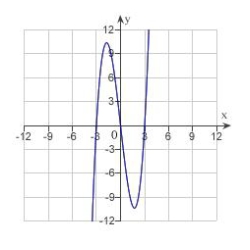
B)
C)
D)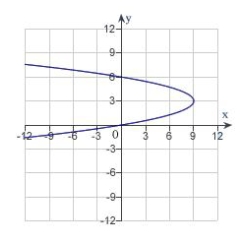
E) none of the above

A)

B)

C)

D)

E) none of the above

4
Test for symmetry with respect to each axis and to the origin. 
A) symmetric with respect to the origin
B) symmetric with respect to the y-axis
C) symmetric with respect to the x-axis
D) both B and C
E) no symmetry

A) symmetric with respect to the origin
B) symmetric with respect to the y-axis
C) symmetric with respect to the x-axis
D) both B and C
E) no symmetry

فتح الحزمة
افتح القفل للوصول البطاقات البالغ عددها 16 في هذه المجموعة.
فتح الحزمة
k this deck
5
Which of the following is the correct graph of  ?
?
A)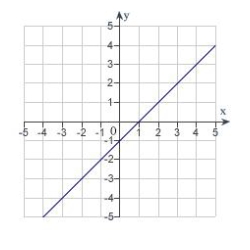
B)
C)
D)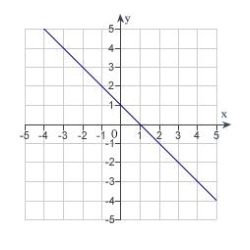
E)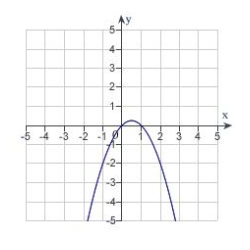
 ?
?A)

B)

C)

D)

E)


فتح الحزمة
افتح القفل للوصول البطاقات البالغ عددها 16 في هذه المجموعة.
فتح الحزمة
k this deck
6
Find the sales necessary to break even  if the cost C of producing x units is
if the cost C of producing x units is  and the revenue R for selling x units is
and the revenue R for selling x units is  . Round your answer to the nearest integer.
. Round your answer to the nearest integer.
A)
B)
C)
D)
E)
 if the cost C of producing x units is
if the cost C of producing x units is  and the revenue R for selling x units is
and the revenue R for selling x units is  . Round your answer to the nearest integer.
. Round your answer to the nearest integer.A)

B)

C)

D)

E)


فتح الحزمة
افتح القفل للوصول البطاقات البالغ عددها 16 في هذه المجموعة.
فتح الحزمة
k this deck
7
Sketch the graph of the equation: 
A)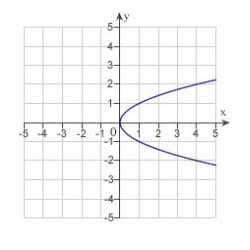
B)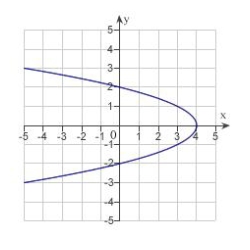
C)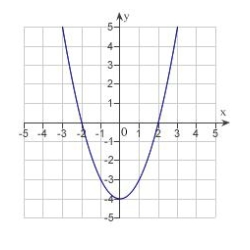
D)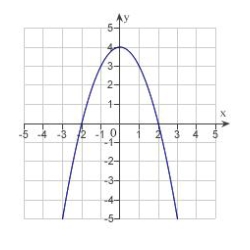
E)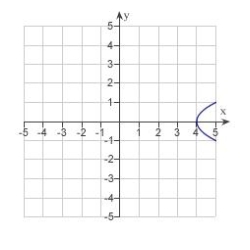

A)

B)

C)

D)

E)


فتح الحزمة
افتح القفل للوصول البطاقات البالغ عددها 16 في هذه المجموعة.
فتح الحزمة
k this deck
8
Sketch the graph of the equation: 
A)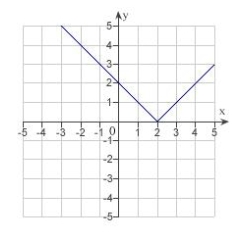
B)
C)
D)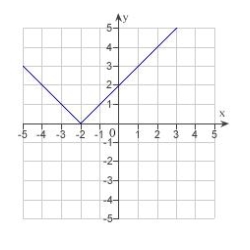
E) none of the above

A)

B)

C)

D)

E) none of the above

فتح الحزمة
افتح القفل للوصول البطاقات البالغ عددها 16 في هذه المجموعة.
فتح الحزمة
k this deck
9
Test for symmetry with respect to each axis and to the origin. 
A) symmetric with respect to the origin
B) symmetric with respect to the x-axis
C) symmetric with respect to the y-axis
D) no symmetry
E) A, B, and C

A) symmetric with respect to the origin
B) symmetric with respect to the x-axis
C) symmetric with respect to the y-axis
D) no symmetry
E) A, B, and C

فتح الحزمة
افتح القفل للوصول البطاقات البالغ عددها 16 في هذه المجموعة.
فتح الحزمة
k this deck
10
The resistance y in ohms of 1000 feet of solid metal wire at  can be approximated by the model
can be approximated by the model  where x is the diameter of the wire in mils (0.001 in). Use a graphing utility to graph the model
where x is the diameter of the wire in mils (0.001 in). Use a graphing utility to graph the model 
A)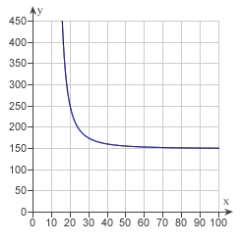
B)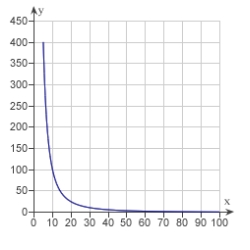
C)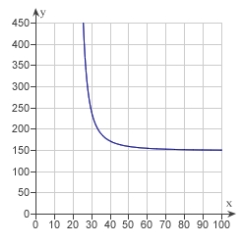
D)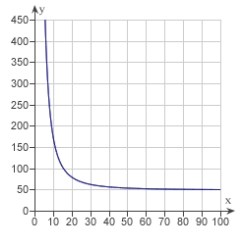
E)
 can be approximated by the model
can be approximated by the model  where x is the diameter of the wire in mils (0.001 in). Use a graphing utility to graph the model
where x is the diameter of the wire in mils (0.001 in). Use a graphing utility to graph the model 
A)

B)

C)

D)

E)


فتح الحزمة
افتح القفل للوصول البطاقات البالغ عددها 16 في هذه المجموعة.
فتح الحزمة
k this deck
11
Find all intercepts: 
A) x-intercepts: (-8, 0), (8, 0); no y-intercept
B) x-intercept: (0, 0); y-intercepts: (0, 0), (0, -8), (0, 8)
C) x-intercepts: (0, 0), (-8, 0), (8, 0); y-intercept: (0, 0)
D) x-intercepts: (0, 0), (-8, 0), (8, 0); no y-intercept
E) x-intercepts: (-8, 0), 8; y-intercept: (0, 0)

A) x-intercepts: (-8, 0), (8, 0); no y-intercept
B) x-intercept: (0, 0); y-intercepts: (0, 0), (0, -8), (0, 8)
C) x-intercepts: (0, 0), (-8, 0), (8, 0); y-intercept: (0, 0)
D) x-intercepts: (0, 0), (-8, 0), (8, 0); no y-intercept
E) x-intercepts: (-8, 0), 8; y-intercept: (0, 0)

فتح الحزمة
افتح القفل للوصول البطاقات البالغ عددها 16 في هذه المجموعة.
فتح الحزمة
k this deck
12
Which of the following is the correct graph of  ?
?
A)
B)
C)
D)
E)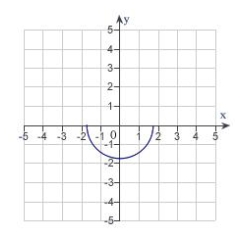
 ?
?A)

B)

C)

D)

E)


فتح الحزمة
افتح القفل للوصول البطاقات البالغ عددها 16 في هذه المجموعة.
فتح الحزمة
k this deck
13
Find all intercepts: 
A) x-intercepts: ( ,0), (
,0), (  ,0); y-intercepts: (0,
,0); y-intercepts: (0,  ), (0, 3)
), (0, 3)
B) x-intercept: (12, 0); y-intercepts: (0, ), (0, 3)
), (0, 3)
C) x-intercepts: (4, 0), (-3,0); y-intercept: (0, )
)
D) x-intercepts: ( , 0), (
, 0), (  ,0); y-intercepts: (0, -12), (0, 12)
,0); y-intercepts: (0, -12), (0, 12)
E) x-intercept: ( , 0); y-intercept: (0, -12)
, 0); y-intercept: (0, -12)

A) x-intercepts: (
 ,0), (
,0), (  ,0); y-intercepts: (0,
,0); y-intercepts: (0,  ), (0, 3)
), (0, 3)B) x-intercept: (12, 0); y-intercepts: (0,
 ), (0, 3)
), (0, 3)C) x-intercepts: (4, 0), (-3,0); y-intercept: (0,
 )
)D) x-intercepts: (
 , 0), (
, 0), (  ,0); y-intercepts: (0, -12), (0, 12)
,0); y-intercepts: (0, -12), (0, 12)E) x-intercept: (
 , 0); y-intercept: (0, -12)
, 0); y-intercept: (0, -12)
فتح الحزمة
افتح القفل للوصول البطاقات البالغ عددها 16 في هذه المجموعة.
فتح الحزمة
k this deck
14
Which of the following is the correct graph of  ?
?
A)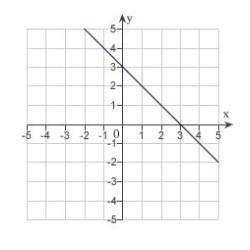
B)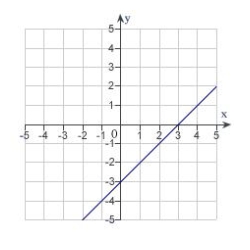
C)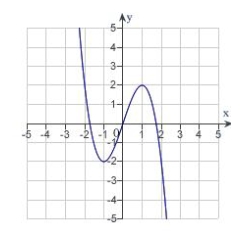
D)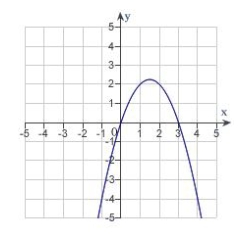
E)
 ?
?A)

B)

C)

D)

E)


فتح الحزمة
افتح القفل للوصول البطاقات البالغ عددها 16 في هذه المجموعة.
فتح الحزمة
k this deck
15
Find the points of intersection of the graphs of the equations: 
A)
B)
C)
D)
E)

A)

B)

C)

D)

E)


فتح الحزمة
افتح القفل للوصول البطاقات البالغ عددها 16 في هذه المجموعة.
فتح الحزمة
k this deck
16
Find all intercepts: 
A) x-intercepts: (-5, 0), (-2, 0), (2, 0); y-intercepts: (0, 0), (0, 10)
B) x-intercepts: (-5, 0), (2, 0); y-intercept: (0, 10)
C) x-intercepts: (-5, 0), (2, 0); y-intercept: (0, -10)
D) x-intercepts: (-5, 0), (-2, 0), (2, 0); y-intercept: (0, 10)
E) x-intercepts: (-5, 0), (-2, 0), (2, 0); y-intercept: (0, -10)

A) x-intercepts: (-5, 0), (-2, 0), (2, 0); y-intercepts: (0, 0), (0, 10)
B) x-intercepts: (-5, 0), (2, 0); y-intercept: (0, 10)
C) x-intercepts: (-5, 0), (2, 0); y-intercept: (0, -10)
D) x-intercepts: (-5, 0), (-2, 0), (2, 0); y-intercept: (0, 10)
E) x-intercepts: (-5, 0), (-2, 0), (2, 0); y-intercept: (0, -10)

فتح الحزمة
افتح القفل للوصول البطاقات البالغ عددها 16 في هذه المجموعة.
فتح الحزمة
k this deck








